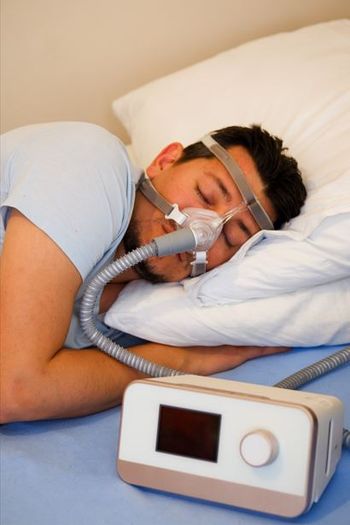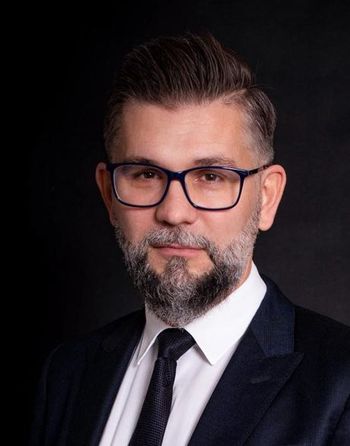
Thrombolytic Drug Confirmed Safe in Stroke Care
STOCKHOLM -- Activase (alteplase), the thrombolytic agent, appears as safe in real-world use for acute stroke as it was in the clinical trials that led regulators to okay it, according to a large European study.
STOCKHOLM, Jan. 26 -- Activase (alteplase), the thrombolytic agent, appears as safe in real-world use for acute stroke as it was in the clinical trials that led regulators to okay it, according to a large European study.
The adverse event of most concern -- symptomatic intercranial hemorrhage -- occurred at a similar rate in the post-marketing study as it did the pooled randomized trials (7.3% versus 8.6%), reported Nils Wahlgren, M.D., of the Karolinska Institutet here, and colleagues, in the Jan. 27 issue of The Lancet.
Activase, a recombinant tissue plasminogen activator also known as tPA, was FDA-approved in 1996 as medical therapy for acute ischemic stroke, but European regulators did not follow suit until 2002. Activase remains the only FDA-approved thrombolytic for acute stroke although other clotbusters are approved for use in myocardial infarction.
The results should confirm tPA's place in clinical practice in Europe as well as the United States, according to an editorial by Gregory W. Albers, M.D., and Jean-Marc Olivot, Ph.D., both of Stanford University Stroke Center in Stanford, Calif.
"Alteplase is severely underused," they wrote. "Few eligible patients are offered the drug, mostly because of apprehension about symptomatic intracranial hemorrhage."
The 2002 license in the European Union was granted for Activase for stroke on the condition that two safety studies would be done. One of these was the observational Safe Implementation of Thrombolysis in Stroke-Monitoring Study (SITS-MOST) carried out by Dr. Wahlgren and colleagues.
Although the trial reflects ideal patient selection, "the laudable results obtained in this mammoth study confirm the safety of intravenous alteplase," Dr. Wahlgren and colleagues added. "SITS-MOST imparts a strong message to European regulators that permanent approval of alteplase for appropriate stroke patients in suitable settings is justified."
The researchers said, "thrombolysis should now be considered a part of routine care of suitable stroke patients."
The multinational monitoring study included 6,483 patients at 285 centers treated with Activase within three hours of stroke symptom onset during the study period from 2002 to 2006. Half of the centers had little or no previous experience in stroke thrombolysis.
Centers reported outcomes through an existing Internet-based stroke thrombolysis registry.
Patient eligibility was restricted to the terms of Activase's conditional license. They had to be no younger than 18 and no older than 80 without severe stroke as indicated on baseline CT imaging or by a baseline National Institutes of Health stroke scale (NIHSS) score of 25 or higher. Other exclusion criteria included stroke within the previous three months, previous stroke with residual functional deficit plus treated diabetes mellitus, and intravenous high-dose or oral anticoagulants at stroke onset. Patients with treatment initiation longer than 180 minutes after symptom onset were not included.
The dose given was 0.9 mg/kg (median 68 mg).
At 24 hours after administration, 1.7% of patients had symptomatic intracerebral hemorrhage defined as local or remote parenchymal hemorrhage type 2 and at least four points deterioration in the NIHSS score (95% confidence interval 1.4% to 2.0%).
Symptomatic intracerebral hemorrhage rates were similar between centers that were experienced and inexperienced with thrombolytics and pooled clinical trials. The results for Cochrane-defined symptomatic intracerebral hemorrhage were:
- 7.3% for experienced centers (95% CI 6.6% to 8.0%).
- 7.3% for inexperienced centers (95% CI 6.1% to 8.7%).
- 8.6% for clinical trials (95% CI 6.3% to 11.6%).
However, both experienced and new centers had lower mortality rates at three months than in clinical trials. The findings were:
- 10.6% for experienced centers (95% CI 9.8% to 11.6%).
- 13.3% for inexperienced centers (95% CI 11.6% to 15.1%).
- 17.3% for clinical trials (95% CI 14.1% to 21.1%).
Among the deaths that occurred within three months of Activase treatment, 14% were judged related to treatment (1.5% of treated patients).
The lower mortality in the study may have been due to selection of patients with better prognosis due to age and stroke severity than clinical trials that took all comers, Dr. Wahlgren and colleagues noted.
The difference between experienced and inexperienced centers did not appear to be due to hemorrhagic complications because rates were similar, they said. One contributing factor may have been that baseline stroke severity was higher among patients treated at inexperienced centers (1 point higher median severity score), they added.
More of the patients in the study were independent (modified Rankin score 0 to 2 points) at three months in the study compared to previous clinical trials.
- 54.4% for experienced centers (95% CI 53.0% to 55.8%),
- 56.0% for inexperienced centers (95% CI 53.4% to 58.5%), and
- 49.0% for clinical trials (95% CI 44.4% to 53.6%).
The rate of complete recovery (modified Rankin score of 0 to 1 point) at three months was also similar. The researchers reported the rates were:
- 38.3% for experienced centers (95% CI 36.9% to 39.7%).
- 40.7% for inexperienced centers (95% CI 38.2% to 43.2%).
- 42.3% for clinical trials (95% CI 37.8% to 47.0%).
The researchers said that auditing of the database did not indicate biased reporting during the course of the study.
The "idiosyncratic" use of eligibility criteria in the study compared with previous studies has important implications, Drs. Albers and Olivot wrote in their editorial.
"First, thrombolytic therapy for stroke should be restricted to properly equipped centers and given under the guidance of experienced stroke specialists," they wrote. "Second, appropriate selection of patients is essential, not only to avert adverse outcomes but also to avoid depriving eligible patients from thrombolytic therapy."
Although the study protocol excluded patients over 80 years of age and those with high stroke severity scores, "these exclusions seem to be excessively restrictive," they said, because other studies have failed to find a threshold age for increase in hemorrhage risk.
"Although elderly patients with severe strokes are unlikely to have full recovery after alteplase, they are less likely to be left severely disabled than placebo-treated patients," Drs. Albers and Olivot wrote. "Therefore, the eligibility criteria used in the National Institutes of Neurological Disorders and Stroke trial continue to be appropriate for general clinical use."
Most of the authors including Dr. Wahlgren received compensation from Boehringer Ingelheim for serving on scientific advisory committees, and several, including Dr. Wahlgren, reported speaking engagements for Boehringer Ingelheim. Others reported financial disclosures for Boehringer Ingelheim, NovoNordisk, Pfizer and Sanofi-Aventis, AstraZeneca, AGFA, Lundbeck, GlaxoSmithKline, Paion and Forest. Dr. Albers reported potential conflicts of interest for AstraZeneca, Sanofi-Aventis, Genentech, Paion/Forest, Novartis, Pfizer, Boehringer Ingelheim, and Concentric. Dr. Olivot reported financial disclosures for the Fondation pour la Recherche Mdicale, Philippe Foundation and Lundbeck.
Newsletter
Enhance your clinical practice with the Patient Care newsletter, offering the latest evidence-based guidelines, diagnostic insights, and treatment strategies for primary care physicians.
















































































































































































































































































